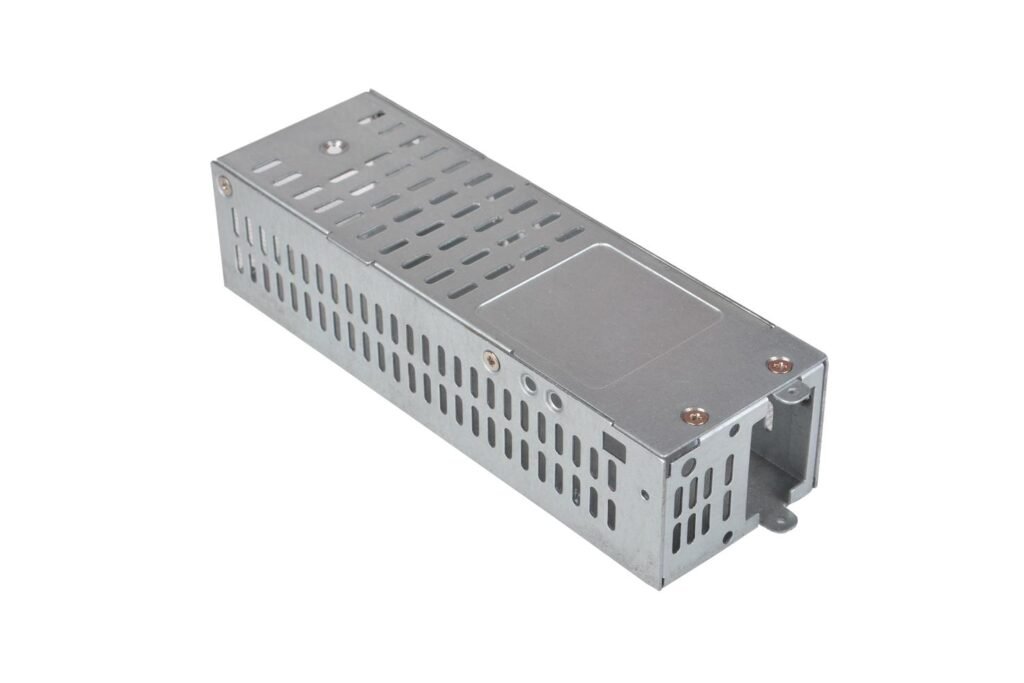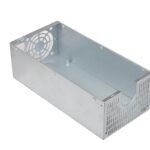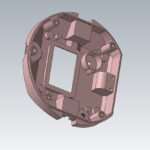Sheet metal fabrication is a process of shaping and designing metal sheets in a cost-effective manner. Various techniques such as cutting, punching, bending, etc are used for the fabrication process which ensures production of robust fabricated materials with better metal finishes.
Today, all the major industries such as the automotive industry, aerospace industry, agricultural industry, medical industry, etc are benefiting after having switched to using fabricated sheet metals in their manufacturing processes.
Benefits of Sheet Metal Fabrication
Be it the automotive industry, electrical industry, utility industry, medical industry, or even agricultural industry for that matter, companies often prefer a custom metal sheet that perfectly suits their production requirement. Sheet metal can be cut, punched, bent, stamped, welded, rolled, CNC machined, and drilled to get the customized output.
A custom metal sheet helps them to scale up production at a low cost as there are fewer to no manufacturing challenges and the output is precise. Furthermore, companies can keep being innovative and create better designs as they know they can completely rely on custom sheet metal to replicate the designs.
Durability
Choosing the right kind of metal and giving it the right thickness, a customized sheet of metal increases the lifespan of the parts to a great extent. Add to that the property of metal sheets being corrosion, heat and rust-free and you get more out of your products than the set target. A great reason to shift to a custom sheet metal approach.
Fewer Limitations
There is no limit or restrictions when it comes to customizing a metal sheet as per the design requirement. The entire process of customization through cutting, drilling, welding, etc takes less time thus enabling a higher rate of production at a low cost. Furthermore, this can be achieved using any kind of metal thus providing the company’s flexibility to choose from the metal suiting their manufacturing requirement.

Faster Turnaround Time
With the usage of QBH technology and other automation tools, it is now possible to customize sheet metals with great precision in less time. This feature enables companies to roll out products quickly into the market and meet the growing demands of their customers.
Ease of Transport
Custom-made sheet metals can be customized in such a way that their weight is less as compared to a non-customized metal sheet. This option makes it easier to transport such metal sheets.
High Precision
The process of customizing a metal sheet can be streamlined to get the same output again and again with great accuracy and precision to suit the specific requirements of the industry. Thus companies no longer need to remain stuck with standard designs, instead, they can use custom designs and meet the market requirements at ease.
Easy Repair
More often than not, after say, 10 years or so old equipment tends to become of no use. This does not hold true for custom sheet metals since they can be easily re-engineered and be of use again. The old custom sheet metals can also be easily recycled thus they are environmentally friendly.
Steps Involved in Sheet Metal Designing
A lot goes behind finalizing a sheet metal design. Since precision and accuracy are the major fundamental advantage of using sheet metal fabrication, the designing part becomes one of the most important steps in the entire sheet metal fabrication process.
Finalizing the Idea
A lot of ideas are discussed and brainstormed to come up with the best possible design to meet the demands of the industry or the client. Often a 3D model is also created during this stage to have a better understanding of the process.
Creating a Blueprint
Once the design is greenlighted, the next crucial step is coming up with engineering drawings of the designs with all the specifications that would go into the final product.
Analysis
The design is then analyzed based on how feasible it is to be implemented based on factors such as available tools, budgets, labor, etc. In this phase, the design keeps getting reworked on to make it simpler, easier and cheaper to execute.
Building a Prototype
Once the design is finalized and the manufacturing requirements are in place, various sheet metal fabrication methods are performed such as cutting, bending, welding, etc to build a prototype of the metal sheet as per the design and the requirement.
Testing
The built prototype metal is then tested internally as well as in the closed group of end-users. This is the phase in which the prototype undergoes multiple evolutions and revisions based on the feedback received until the result is as per the set requirements.
Final Production
With the prototype model achieving the desired outcome, companies then go into full-scale production using sheet metal fabrication to build better quality products with better metal surface finishes.

Metals Used for Sheet Metal Fabrications
Steel: Steel provides great strength and durability.
Magnesium: Magnesium is used for its low density and stiffness.
Aluminum: Aluminum is very light compared to other metals and is thus used for ease of transport and it is also temperature resistant.
Bronze: Bronze has a low melting point. Majorly used in manufacturing household appliances.
Brass: Used in fittings because it is corrosion resistant and also lightweight.
Copper: Copper is a good conductor of electricity and can also be easily given any desired shape.
Apart from the above mentioned metals, there are some pieces of equipment that come handy in the sheet metal fabrication process. These equipment include fittings, plate metals, drillers, hammers, punching tools, casting materials, sectional and shaped metals, welding wires, clamps, etc.
Design Considerations for Sheet Metal Fabrications
Hole Size
Ensure that the hole size is equal to or larger than the thickness of the metal so that a situation such as breakage or damage does not arise. This ultimately benefits the output rate and reduces the cost.
Furthermore, working with metals generates a lot of heat and friction which may result in the tearing up of the metal in case the holes are at the edges or near the curls. In Order to avoid such a scenario, it is advised that the minimum distance between holes and edges should be at least three times the thickness of the sheet. Whereas, the distance between two holes on the metal surface should be at least six times the thickness of the metal sheet used.
Hole Diameter
For any sheet metal, the diameter of the hole should not be too small. Small holes mean more precision which translates into more manufacturing costs. Besides, small holes are also more vulnerable to getting damaged during the sheet metal fabrication process. Ensure that the diameter size is equal to or more than the thickness of the sheet metal used.
Bend Radius and Bend Orientation
All sheet metals have to undergo bending and in this bending process, they are subjected to a lot of strain. In the event that the strain exceeds beyond a point, it would result in cracks, damaging the metal sheet. The point beyond which a metal sheet should not be bent is known as the low bend radius. Ideally, this bend radius should be at least equal to the thickness of the material. The minimum bend radius varies according to the type of metal.
Uniformity of bends is another important factor that helps in standardizing the process and lowers the overall manufacturing cost. So, make sure that the bends in the same point are designed in the same direction.

Tolerance
Tolerance is often overlooked while designing a metal sheet which results in damaged products and also increases unnecessary costs. Keeping tight tolerance over hole diameters, radius, and distance results in more cost and low productivity. The tip here is to build only those features that are absolutely necessary.
Folds
Complications in the design translate into increased costs. The tip here is to keep the folds simple, the angles easy to blend so that the metal is easier to fold. It is recommended that the radius should be equal to or greater than the thickness of the material. If possible, avoid small bends on the thicker parts as it is not only expensive but also a difficult approach. So while complex is costly, remember that simple is cost-friendly.
Tabs and Notches
Another important tip is related to optimizing the design of tabs and notches. Notches should be placed about 1/8th inch away from each other and should not be closed to the edge. The width of the notch should be greater than or equal to the thickness of the metal used. The notch length should be up to five times the thickness of the metal.
Tabs on the other hand should not be longer than five times their width and should be greater than or equal to two times the metal’s thickness. Following these recommendations shall ensure there is no breaking and deformity during the designing process.
Offsets
Offsets are the Z-shaped bends to be used as brackets and clamps. The important tip with using offset is that the bend radius should be uniform throughout the metal sheet and the parallel planes in the offset should be equal to or greater than twice the thickness of the metal sheet.
Curling
The edges on the sheet of metals tend to be sharp. Curling is the process in the sheet metal fabrication which makes the edge safe for handling. This process involves adding a hollow, circular roll to the edge of the metal sheet. Ensure that the outside radius of the curl is equal to or greater than twice the thickness of the metal.
Hems
The safe and strengthened edges that are established on the sheet of metal are due to hems. The important tip here is to avoid flat hems at all costs as they are prone to fracture and getting damaged. For open hems, ensure that the inside diameter is equal to or greater than the thickness of the metal. Lengthwise, maintain the length of hem to about four times the thickness of the metal. Closed hams on the other hand should be completely folded. For a teardrop hem, ensure that the inside diameter is equal to the thickness of the material.

Methods Used for Sheet Metal Fabrication
There are several ways and methods such as sheet metal laser cutting, sheet metal bending through which a sheet metal can be fabricated. However, the fundamental principle boils down to the sheet metal being formed or cut. In the recent years, there has been a rise in the usage of QBH technology and other kinds of automation tools to facilitate the sheet metal fabrication process as per the desired result. Some of the predominantly used sheet metal fabrication methods are as follows:
Cutting
Cutting is one of the most basic methods to fabricate a metal sheet. One of the common ways of cutting is sheet metal laser cutting. Other than this, sheet metals can also be cut by sawing, shearing, using a high pressure water jet, etc to fabricate the sheet metal as per the specific requirement.
Bending
Bending is achieved by subjecting the metal sheet to hydraulic brakes that are set at certain angles. The metal sheet is then placed in the brakes and applied force to bend it at the specified angles.
Rolling
Rolling is either done using a hot-rolling process or a cold-rolling process. The hot-rolling method is used to create thin metal sheets whereas the cold-rolling method is used to make thick metal sheets.
Welding
Welding is an important method in the sheet metal fabrication process. Once the desired shape is attained, welding helps to retain that shape of the metal so that it does not get deformed and ensures it has better metal surface finishes.
Shrinking and Stretching
Shrinking is done to smoothen out the edges and other irregularities in the shape of the metal. Stretching on the other hand is done to stretch a metal sheet and get the desired shape.
Fastening
Holding tools like nuts, screws, etc are used to hold the metal sheet tightly during the sheet metal fabrication process.
Hydroforming
Hydroforming is a method in which the metal sheet is subjected to high pressure fluid to give it the desired shape.
Punching
Punching is done to give the metal sheet a uniform shape throughout and remove any holes in the sheet.
Stamping
Stamping is somewhat similar to punching but in stamping, there is no need to remove the material from the sheet metal. Stamping is used to outline, draw and emboss the material.
Assembling
Assembling is often the last step of customization and is achieved by welding, binding and bending to get the desired outcome. Fasteners, bolts, screws, etc are used to complete the assembling process.
As compared to other manufacturing methods, companies can easily implement sheet metal fabrication in their manufacturing process and derive accurate and precise results and that too on a large scale and at a much lesser cost. Sheet metal fabrication also gives companies the license to innovate and keep improving their designs which can be easily met through sheet metal fabrication.
Thus it is not at all surprising that sheet metal fabrication is extensively used in multiple industries such as aeronautics, electronics, energy, agriculture, and healthcare among others.




